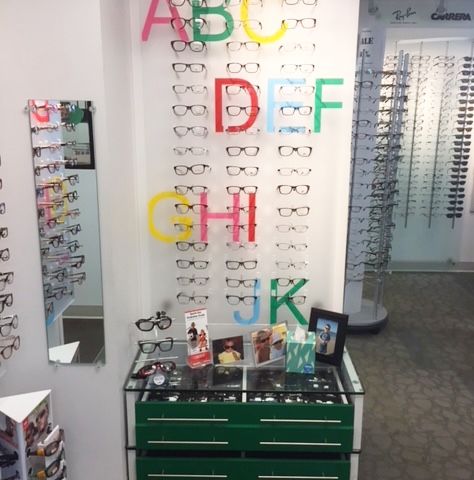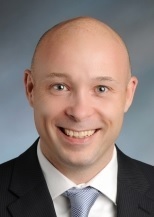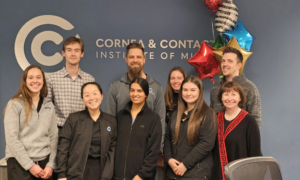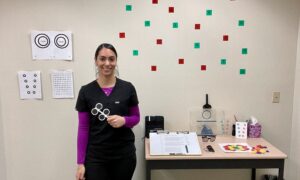By Scott Huffer, OD, FAAO

Dec. 6, 2017
Providing care for the whole family is a key to practice growth. When you become part of the whole family’s healthcare regimen, you are able to reliably see multiple members of the same family annually for exams and other needs. That ensures sustained patient care, and a strong revenue stream.
My five-OD practice in Nashua, N.H., has seen 1,957 patients under 18 for exams year-to-date. Nineteen percent of our office visits year-to-date are for patients under 18. I have seen 568 patients who are under 18 year-to-date.
Our average per-patient revenue in 2017 is $420.12. Most kids don’t generate as much in revenue from product sales as older patients, so I would estimate $385 per pediatric exam. That would be $218,680 for myself and $753,445 for the office year-to-date. Projected out per annum would be: $904,134 for the office, and $262,416 attributable to me.
The revenue comes from exams, ancillary testing, contact lens fittings, annual supplies of contact lenses, vision therapy, standard eyeglasses and sports glasses. We are between 65-70 percent daily disposable lenses overall, and probably higher in the younger patients, and that drives up revenues. Kids eyes and heads change a lot as they grow, so they replace glasses more frequently than adult patients. We fit many kids in progressives to address conditions like digital eye fatigue syndrome, and that also helps drive revenues. We do not offer Ortho-K at our office, but refer those patients elsewhere.
Our practice has been around since the 1940’s. We are entering our fourth generation of ownership currently. Pediatric patients in our community are under-served. There is a great demand, and my practice partner, Kelly MacDonald, OD, and I, both enjoy seeing young children. I also think we are both quite good at it.
It’s important to remember that those children grow up. They become contact lens wearers, and in many cases, are patients for life. We have patients who have been coming to our office for more than 40 years. In an age when young adults and Millennials are a key, and difficult, demographic to reach, we have many because they started with us years ago. It is also a daily occurrence to see more than one person in a family in a given day. If we did not see those kids, we would not have the pleasure of seeing their parents.

The portion of the optical in Dr. Huffer’s office devoted to children’s eyewear. Dr. Huffer says it’s worth showing families that you care enough to set aside optical space for children.
Acquire Needed Instrumentation & Supplies
We use M&S Technology charts, which have good optotypes for measuring visual acuity in children. M&S also has a movie clip you can show children while testing, which is excellent when you need a child to maintain fixation. In addition, we have a few small hand-held toys in the exam rooms for entertaining younger children. We have a retinoscope and retinoscopy rack in each room, but I think this is pretty standard at most practices.
Prepare to Work with Young Patients
Doctors should be comfortable and proficient examining young children, or send them to someone else. Fortunately, there are educational resources readily available to assist you. The new AOA Pediatric Eye and Vision Examination guideline is a good start.
Keep Children Comfortable While in Your Office
We have a small, specially decorated area in our optical with children’s eyewear. We also have a few lines appropriate for teens, but they are mixed throughout our adult frames. Our opticians are great at guiding patients in the right direction, including teens who may have specific styles in mind.
In our waiting room, we have a small nook with children’s toys and books. To keep parents comfortable while they wait, we have an industrial Keurig in our waiting room with coffee, tea and hot chocolate. Our staff is very good at caring for all patients, including the youngest among them. For instance, a staff member recently brought crackers to a cranky toddler, and it immediately cheered him up. That same staff member cleaned up the cracker crumbs before the mother even had a chance to worry about it. She later commented that this staff member was the office’s “resident grandmother.” It helps to have staff members who like and understand young children.

The children’s waiting area in Dr. Huffer’s office. Having toys, or games, to occupy children while they wait for their appointments makes both your staff’s, and patients’, lives easier.
Educate Parents
Parents are some of the easiest converts when making recommendations. Often, parents will not convert to daily disposable contacts themselves, but will purchase daily disposables for their children. We explain lower complication rates, and less hygiene demands for daily disposables, and parents are usually sold on their children wearing them.
Eyeglass costs are sometimes an issue, as some kids are impressively destructive. I explain our quality and warranties will often save them money for multiple pairs relative to the low-cost eyeglass options available online. I also cite reports showing inaccuracies in prescriptions in online glasses companies, and show reports of safety concerns with online glasses not meeting minimum thickness standards.
I tell parents that if they do the unthinkable, and buy glasses online, to bring them in and have the prescription checked for accuracy. Kids will not complain generally that they are not seeing right.
I make it more likely that parents will return annually with their children for comprehensive exams by explaining that their children’s eyes are changing just as quickly as everything else about them.
Seeing children regularly also helps you maintain relationships with the parents, and keep them as patients as well. Kids often come with their parents for visits. If kids feel like they are being well cared for, and parents see that high level of care for themselves, it isn’t long before mom asks: “Do you see adults?”
 Scott Huffer, OD, is a partner with with Drs. Helfman, Lasky & Associates in Nashua, N.H. To contact: eyedocscott@gmail.com
Scott Huffer, OD, is a partner with with Drs. Helfman, Lasky & Associates in Nashua, N.H. To contact: eyedocscott@gmail.com



























